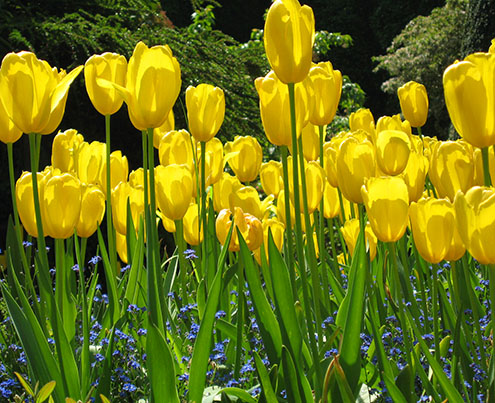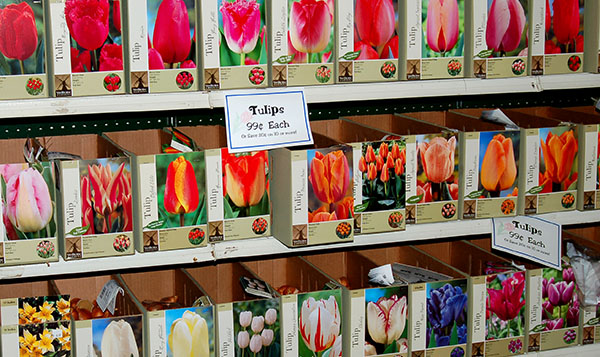It’s November and we’re heading into the dead zone. Winter is a’comin’ in and your garden is going to sleep. To get you through the winter doldrums, think about spring bulbs. Imagine cheery, colorful crocus brightening your dreary days in late winter and very early spring, as they pop through the snow. Picture bright tulips, golden daffodils, and other spring flowering bulbs following behind the crocuses in a symphony of color through March, April, and May. You can make it so by planting spring blooming bulbs now.
Go to your local garden center and check out the bulb display. Every autumn, garden centers, nurseries, grocery stores, and catalogs tempt us with gorgeous color photos of bulbs in full bloom. Like brightly colored candies they lure and seduce, beckoning us to purchase a bag full of hope, the promise of spring. Bins, baskets, and bags are filled with plump bulbs just waiting for you.
But how does one select? There are so many choices and most of us can’t have them all. We have to select some and reject others. There are three main criteria to consider when choosing which bulbs to buy. First is color, next is season of bloom, and finally, height.
Color is entirely a matter of personal preference but you should think about what will be behind the flowers. If the bulb flowers are going to be in front of a wall (your house for example) what color is the wall? If your house is yellow, then yellow tulips or daffodils will be invisible. Choose flower colors that are analogous or complementary to the background color.
Be sure to read the label and look for season of bloom. Each kind of bulb will have a label describing the season of bloom as early, mid-season, or late. By making appropriate selections you can have a choreographed sequence of color in your garden for as long as three months, just using bulbs alone.
Height is another important factor. Put the shortest bulbs in the front, the mid-range ones in the middle, and the tallest in the back. That way they can all be viewed and enjoyed equally. However, if your bulb garden is an “open bed”, that is, there is no wall, fence, or hedge at the back so you can view it from all sides, then arrange the bulbs with the tallest in the middle. Surround them with the medium height bulbs and put the shortest bulbs around the outside edge.
Additional tips for success. First, when selecting bulbs, give them a squeeze. Make sure they’re firm. If they’re soft and squishy do not buy them, you’re only buying disappointment. Second, inspect them for moldy spots. If you see tiny spots of blue, yellow, or pink mold do not buy them. These symptoms (squishyness and mold) signal disease or pest issues that, at worst, may infect your garden and, at best, result in fewer, smaller flowers than you wanted. Third, get your bulbs into the ground before it freezes. Bulbs need six weeks of cold weather in the ground in order to grow roots and flower. Without the cold weather they cannot flower. And besides, the longer they stay at room temperature the more they dry out and use up their energy reserves just trying to stay alive.
Handled properly, spring flowering bulbs live for many years. Daffodils and crocus in particular will bring you cheery smiles year after year for a long time to come.




Good Job. This will help me alot. Thanks.